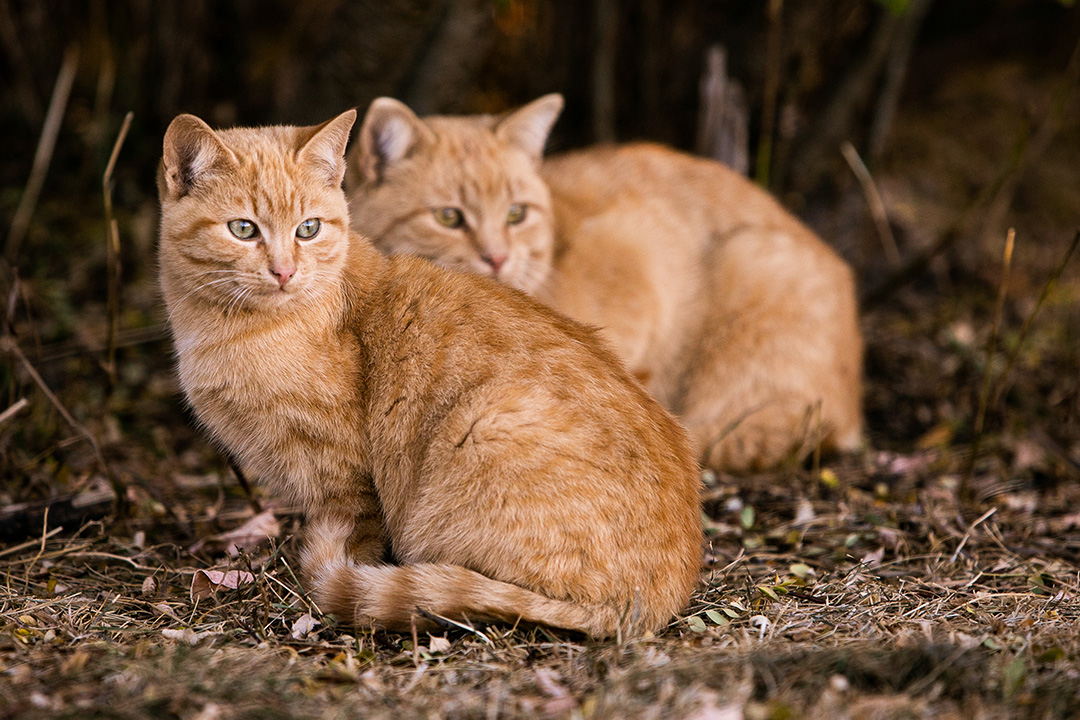
To catch a cat killer
Feline infectious peritonitis (FIP) is a life-threatening disease with an increased incidence in cats that have spent time in humane shelters or other multi-cat environments.
By Dorsa MehrabanpourIt’s one of the most common infectious diseases in cats globally, and without expensive medication, the disease is virtually 100 per cent fatal.
I’m part of a research team at the University of Saskatchewan (USask) whose members are aspiring to use an advanced medical imaging technique — positron emission tomography scan (PET CT) — to develop a more rapid, non-invasive way to diagnose and monitor response to anti-viral therapy for this deadly disease in cats.
If our research work is successful, it could mark a major advancement and provide a non-invasive imaging tool for the diagnosis of FIP.
Feline coronavirus (FCoV), the virus that causes FIP, belongs to the same family as the coronavirus that causes COVID-19 in people. FCoV has two biotypes: a very common, avirulent form referred to as feline enteric coronavirus (FECV), and a virulent form that causes FIP.
FECV is very common in cats, and if an affected cat shows any clinical signs, it’s usually mild diarrhea. This form of the virus is shed in the cat’s feces, allowing other cats to be infected. In an infected cat, FECV can mutate into the virulent FIP virus — allowing systemic spread within the cat’s body. Contributing factors to FIP’s development include stress, age and genetics that help determine the type of immune response the cat has to the virus.
For cats with FIP, the disease can present in a few different forms referred to as dry, wet or a combination of both over time, as well as more localized forms including neurologic and ocular subtypes.
Veterinarians can make a presumptive diagnosis of FIP through a combination of the patient’s medical history, clinical findings, molecular tests and laboratory findings. But the only way to definitively diagnose the disease is through immunohistochemistry — the “gold standard” for diagnosing FIP. This lab test is most commonly performed on tissue collected from an invasive surgical biopsy. Unfortunately, the surgery may imperil the patient — potentially causing the disease to worsen or even lead to death.
Treating the disease is another major challenge since there has been no commercially available anti-viral drug for FIP. The medication, GS-441524, has shown an efficacy rate of over 80 per cent but is expensive and was only available through the black market online. But in February 2024, Canadian veterinarians gained legal access to antiviral drugs that can treat FIP.
Our team consists of Dr. Liz Snead, my graduate supervisor and a small animal internal medicine specialist, and my co-supervisor, Dr. Jaswant Singh, who brings expertise in histology and imaging. In addition to these two Western College of Veterinary Medicine (WCVM) researchers, other members are Dr. Eric Price, Canada Research Chair in Radiochemistry and an assistant professor of chemistry in the USask College of Arts and Science, and Matthew Hutcheson, a nuclear medicine technician at the university.
The goal of our research is to develop a specific probe to allow for the definitive diagnosis of FIP using PET-CT imaging. But as a first step, we are imaging cats with various forms of FIP using the non-specific PET isotope, 18F-fluorodeoxyglucose (FDG), both before and after 12 weeks of antiviral therapy. This non-specific probe allows scientists to assess the extent of disease lesions, but unfortunately, it can’t rule out the possibility of visible lesions being caused by types of cancer. For example, lymphoma is a common type of cancer that can affect young cats and looks very similar to FIP both in terms of the presenting clinical signs and findings seen with medical imaging.
Our ultimate goal is to develop a more specific PET-CT probe by binding a different PET isotope (zirconium-89) with an anti-FCoV antibody. By injecting the anti-FCoV antibody labelled to zirconium-89 in FIP-infected cats and then imaging them using PET-CT, the research team can hopefully visualize lesions where the antibodies are binding to cells infected with FIP within lesions seen in various organs of the body.
In the final steps of the project, we will take PET-CT images of four FIP-infected cats using both the specific and non-specific probes, followed by re-imaging after 12 weeks of anti-viral treatment. We will then correlate and compare the imaging findings seen using the specific and non-specific probes. Additionally, we can determine whether a 12-week treatment protocol with anti-viral drugs is suitable and sufficient to treat FIP in all of the cats or if findings at 12 weeks could help predict which (if any) cats will relapse after stopping the anti-viral therapy.
In addition to developing the first non-invasive imaging diagnostic technique for FIP, our research team’s work could also potentially pave the way for developing an alternative or adjunct treatment for FIP using radioimmunotherapy — similar to how human physicians and veterinarians use radioactive iodine to treat hyperthyroidism in humans and animals.
This treatment option may be valuable for reducing the burden of the disease before starting anti-viral therapy, allowing a shorter course of treatment where the owner has to administer daily oral or injectable antiviral medications. Or, it may serve as a rescue treatment for cats that suffer a relapse after a long course of anti-viral drugs.
The Sylvia Fedoruk Canadian Centre for Nuclear Innovation is funding this research project.
Dorsa Mehrabanpour is a master's student in the Western College of Veterinary Medicine’s Department of Veterinary Biomedical Sciences at the University of Saskatchewan.
Click here to read more articles in the Spring 2024 issue of Vet Topics, newsletter for the WCVM's Companion Animal Health Fund.
Together, we will undertake the research the world needs. We invite you to join by supporting critical research at USask.
